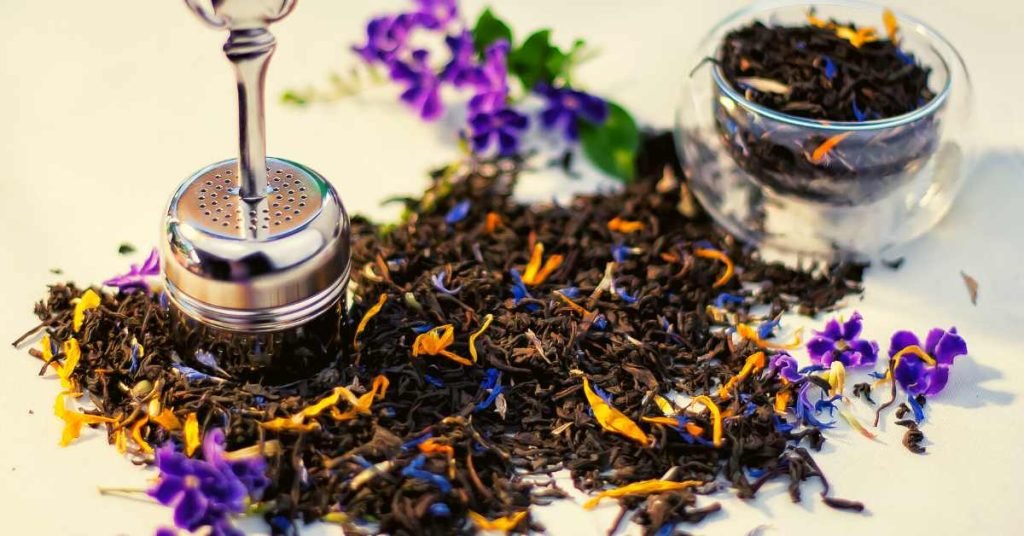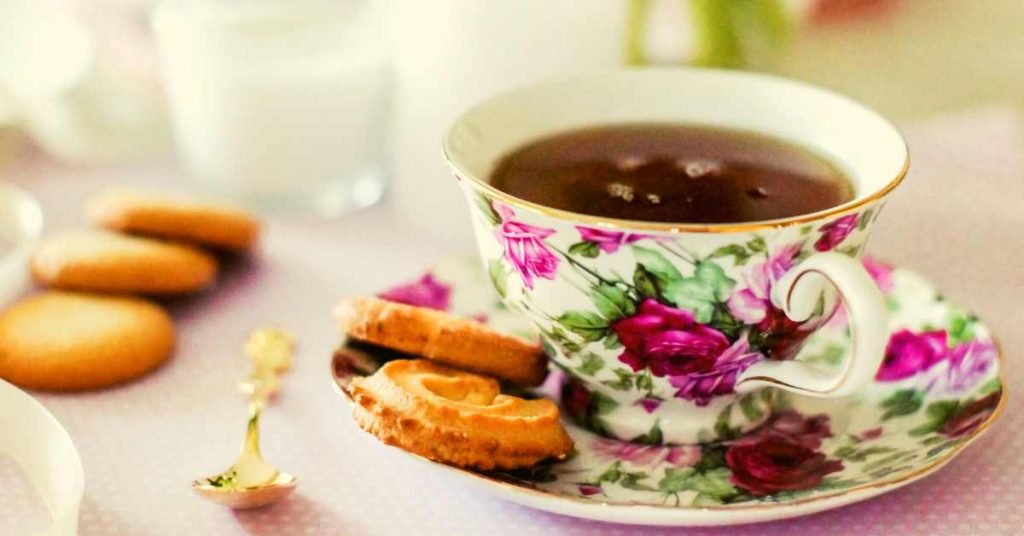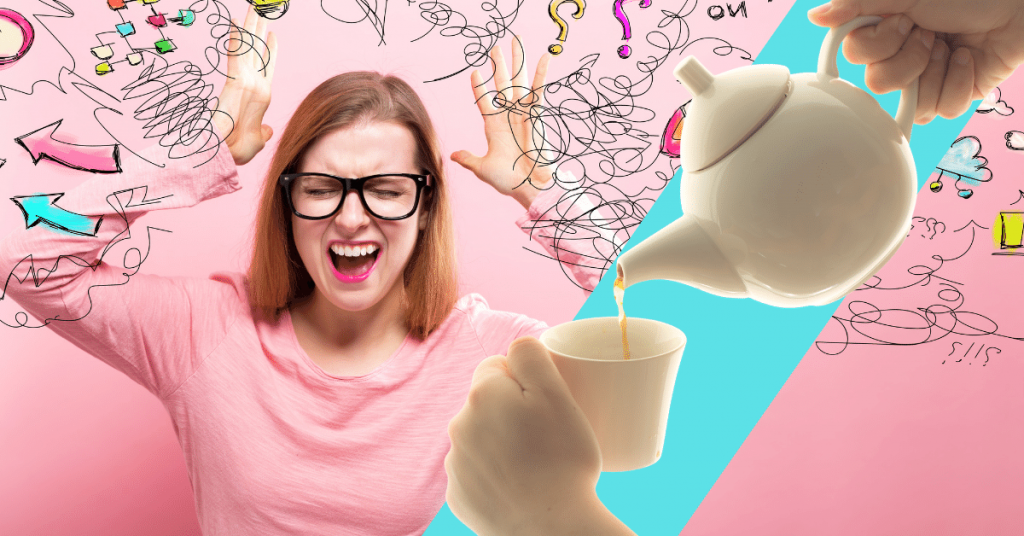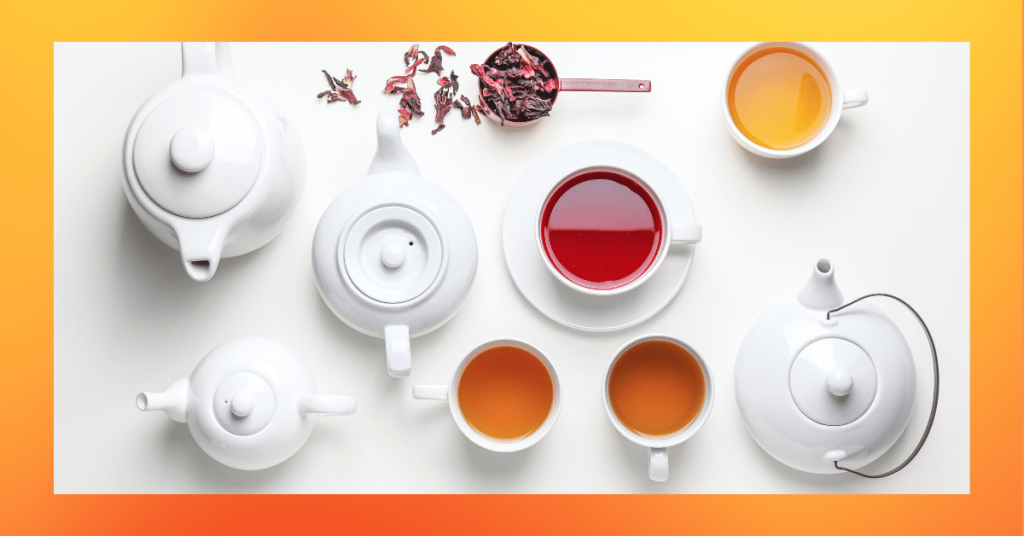There is no stamp more classic than that of an Englishman taking his tea, in fact, taking his tea with milk. And what to say about the five o’clock tea.
Because yes, although that is the best-known tradition and that has become so famous around the world, the British drink more, so, tea consumption in England is more than 60,000 million cups of tea a year, which gives an average of 2 or 3 cups a day for each Englishman.
Today we dedicate a complete article to English tea, so you can know its origin, the types of English tea that exist, which is the most commonly drunk, or why they usually drink it with milk, among other data.
But before we start, it’s tea time, so let me invite you to prepare a nice cup of tea (if you want, a very British one, such as English Breakfast black tea or one that, at this time that you are going to read the article, you feel like and you like) and when you are ready, we begin this tour.
English Tea Origin

If you have been following us here for some time or know something about the history of England, surely you will not be surprised if we tell you that tea came to this country from India.
Something that already differentiates it from the rest of European countries where tea also began to be drunk, since in other countries tea entered through the Netherlands, where this drink came from Indonesia.
But if the origin marks part of how tea is taken in England and then we will explain, so does the time in which it arrived: the seventeenth century and, specifically, in the year 1650, with the British East India Company already founded and that was responsible for introducing this drink in England.
In the beginning, it was only taken by the upper classes, kings, nobles, and aristocrats, but over time, tea became popular, reaching all social classes, although it is true that the varieties of tea that took some and others had nothing to do.
Types of English Tea
Although tea indeed came to England from India, nowadays different types of tea are drunk, being its origins varied: India, Sri Lanka, Africa, and China.
In fact, the most consumed variety of tea is black tea, the blend of Assam and Ceylon, one of the most popular (the fusion of India and Sri Lanka).

In addition, Darjeeling black tea (from India) is also consumed and is considered one of the best in the world and is known as “the champagne” of teas, due to its quality and exquisiteness.
Of course, we cannot fail to mention Earl Grey or English Breakfast, both black teas, a mixture of varieties of very good quality and Indian or Sri Lankan origin.
What Is the Most Popular English Tea?
Of all the varieties of black tea that can be drunk in England, the most consumed is Earl Grey, although it is not the best known outside its borders, especially if we are talking about people who are not very fond of tea.
However, another tea is also very popular in this country, and that is the best known worldwide, and that is none other than the English Breakfast. In fact, such is the fame that outside this country it is known as “English tea”.
Breakfast Tea, the Best Known
If the English are proud of anything, it is that this tea has been associated with their country and customs, despite being a mixture of varieties of black tea from India and Sri Lanka. As you can see, finding good fermented black teas is easy in a country where tea is famous in all its versions.
As it could not be otherwise, behind this tea there are also several beliefs about its origin, since one assures that it is a mixture that was first elaborated by a New York merchant who wanted to sell a tea very similar to the one made in England but in the United States.

Another also says that this tea became popular thanks to Queen Victoria, but that it was actually a variety that was called Breakfast because it used to be when it was drunk and that it comes from Scotland.
In any case, what we have clear is that it is a strong flavored tea, which has a high amount of theine and that this makes it perfect to take, as its name indicates, at breakfast, although it is also accepted, many times, in the famous “tea time”.
It is also rich in vitamins B and C, as well as minerals, including iron, calcium, and magnesium. Because of its flavor, it goes perfectly with a bit of milk.
Varieties with Black Tea
Considering tea’s origin in England, it is not surprising that the most consumed varieties are black tea and its blends. In fact, green tea, which is now beginning to have more prominence in this country (in this matcha tea) is hardly consumed, although it is the most consumed in the world.
We have already mentioned above which were the most consumed varieties in England (Assam, Ceylon, Earl Grey, and Breakfast), but it is not unusual to see someone drinking a Lapsang Souchong (originally from China) or a Darjeeling.
Assam Tea, a Favorite in England
If there is one thing the English like when it comes to teas, it is strongly flavored teas.

In fact, one of the most widespread beliefs is that it is the lower classes who drink the milder black teas and, on the contrary, the wealthier classes who drink the stronger ones.
Perhaps for this reason, Assam tea is always present among the most consumed black teas in England.
A tea that is characterized by being especially astringent, which has a diuretic and antioxidant effect, as well as being rich in tannins and theine. What does this mean? That it is a tea that helps you to wake up your body and keep your mind alert.
Due to its flavor, it is perfect to drink it with milk and combine it with both sweet and savory flavors, so it is perfect for breakfast, brunch, lunch, or the famous five o’clock tea, where both sweet and savory flavors are mixed, at least if we respect the traditional 100%.
Earl Grey Tea, Discover Its Citrus and Fresh Flavor
Do you know what makes this tea so special? Bergamot. It is responsible for giving it that aroma that permeates a room when it is served to steam, but also for giving it that fresh citrus flavor.
That freshness and citrus touch makes it a great accompaniment to desserts. Maybe that is also what has made it one of the most popular in England. Such is its fame, that they have tried to create similar mixtures, but with varieties of green tea and red tea, without surpassing the exquisiteness of the original.

As for its properties, it is characterized by having a strong and astringent flavor, as well as digestive and rich in vitamins A, B, and C, not to mention its high amount of fluoride, which helps to improve the health of bones and teeth, although it is associated with black tea as one that stains teeth.
It is usually taken very hot, but due to its fresh touch, it is also a perfect candidate to drink very fresh, of course, without milk (at least, we like it less that way when it is cold).
Why English Tea Is Drunk with Milk?
The answer is quite simple: the tea that came to England from India was a strong flavored tea, so the English decided that mixing it with milk was something that would soften the drink.
And so it was that something that began as an anecdote, became popular to the point that the origin of tea with milk begins and is associated with this country.
Of course, it is important that it is only a cloud of milk, nothing more and let it infuse well so that the tea does not seem very white, as that would be associated with low-quality tea or people who have no patience to prepare tea when in this country it is an institution.
Another important note when preparing English tea is that the milk must be served cold, in fact, some say that it is drunk with cold milk from the refrigerator.
What Is Milk Tea Called?

In England, it is known as Milk Tea, but in other countries where it has also become popular, such as Italy or the United States, it is known as Latte Tea.
Also, if you ever travel to England, you may have to ask for some milk to be put in your tea and then you will have to say “spot of milk” or “tea with a splash of milk”. Of course, it is also known as “cloud of milk”, which is the most common translation (a cloud of milk), but they use it less.
In some areas of England, instead of adding milk, they add cream, but this is a type of preparation that you can find anywhere in the country, so it will not be strange to see a sign that says “tea with cream”.
MEDICAL DISCLAIMER
Itsnevernotteatime.com cannot and does not contain medical/health advice. The medical/health information is provided for general and educational purposes only and is not a substitute for professional advice.




